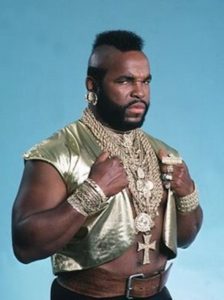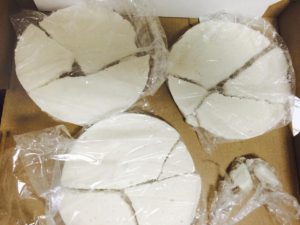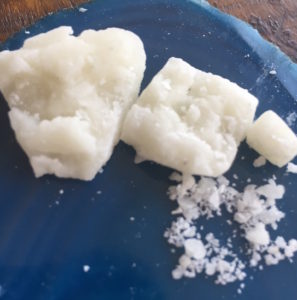Grape Street is one of infamy in South Los Angeles. The 9500 block sits north of the Jordan Downs housing projects, and both are home to the Grape Street Crips.
When I worked at Firestone, it was considered a cherry patch for drug and gun arrests, and it probably still is. It is also in the City of Los Angeles, not the county. But only by a few inches, at least on the map.
“Hollywood”
I was fortunate to be partners with Ernie Magana for a few months back in the late eighties. Ernie was a great street cop who talked fast and drove faster. One afternoon we were traveling east on 92nd Street when a car careened onto Grape Street at a high rate of speed. The vehicle was too far away for us to see who occupied it, but we were both inclined to find out—before they made it into the projects!
Magana floored it and didn’t slow down much as we squealed around the corner. Within seconds, we were on the bumper of the speeding car, and we saw that the driver was a woman. The car was also loaded with children, and we were both a little disappointed.
We were not inclined to pull her over. If the car had been occupied by gang members, a traffic stop would have been appropriate and justifiable, even though we were now out of our district. But we weren’t traffic cops; we were hunting bad men.
Poaching in the City
On the southwest corner of 95th and Grape Streets sat a notorious crack house. Two blocks further south were the Jordan Downs. Gangsters were abundant in this area, but on this occasion, there was one in particular who caught Ernie’s attention. It was a young man of about fourteen years who dressed as if had just left the Grape Street Gang Emporium and spent a week’s worth of cocaine sales profit on a new wardrobe. No, there is not really any such emporium, but this kid was “gangstered” out from head to toe with his purple cap (worn sideways), some type of jersey—that, like his pants, was twelve sizes too big for him—and matching shoelaces. (Crips wear blue, but Grape Street Crips often wear purple instead.)
 His ensemble was completed with the very elegant Mr. T gold starter-kit: thick gold rope necklaces, bracelets, and rings, and matching gold earrings. He was riding a BMX-style bicycle, which, at the time, were the type of bikes most frequently stolen.
His ensemble was completed with the very elegant Mr. T gold starter-kit: thick gold rope necklaces, bracelets, and rings, and matching gold earrings. He was riding a BMX-style bicycle, which, at the time, were the type of bikes most frequently stolen.
Ernie swerved to the side of the road and stopped. We both jumped out as Ernie ordered the gangster to “Grab the hood.”
The Legacy of Firestone
The criminal types in Firestone’s jurisdiction had been trained by the generations of no-nonsense deputies who preceded us. They had paved those streets with their own blood and sweat and tears.

The station was legendary for the Watts Riots, the annual Watts Festivals, the origination of the Crip gang, and the highest murder rates in the country. It was also famous for being stocked with courageous, tough men and women who took to the streets and placed themselves in harm’s way to make those streets a little safer. The gang members had a healthy respect (or maybe fear) of those who wore the tan and green.
The miniature gangster dropped his bike and grabbed the hood spread-eagled as if he had assumed the position dozens of times—he probably had. Ernie homed in on him, quick to check his waistband for weapons while asking where he got the bike. But at the same time, a man, who had been walking up the sidewalk and was only several feet from the gangster when he dropped the bike, stepped from the sidewalk onto the street.
Watching his Back
I focused on the pedestrian as my partner addressed the more immediate threat. I paid particular attention as the man veered toward us. His eyes were locked with mine, and his right hand was in his jacket pocket. Ernie had just reached the gangster—this all happened in a split-second—and his words “Grab the hood” still hung in the air. I was drawing my pistol as the man’s right hand came out of his jacket.
Shoot, or Don’t Shoot?
Thirty years later, I still remember seeing what filled his hand.
I also remember his exact words: “I ain’t gonna lie, deputy, it’s cocaine.”
 His hand was now outstretched and I could see a large disc-shaped object that was off-white in color, about two inches thick and the diameter of a medium-sized skillet. I couldn’t believe my eyes; it was cocaine!
His hand was now outstretched and I could see a large disc-shaped object that was off-white in color, about two inches thick and the diameter of a medium-sized skillet. I couldn’t believe my eyes; it was cocaine!
Most crack cocaine arrests by patrol cops are the result of finding one or maybe a couple of “rocks” on a suspect, and we all made a lot of those arrests. Getting a cookie was a big deal, something to brag about. Especially on a pedestrian stop. It was a “great hook.”
The Crack Epidemic
Cocaine is “cooked” during the process of making crack cocaine. In the disc form—straight out of a skillet—it’s called a cookie.
 The cookie is then cut into smaller “rocks” for individual sales.
The cookie is then cut into smaller “rocks” for individual sales.
The pedestrian handed me the cookie as I met him at the front of our patrol car, and then he, too, grabbed the hood of our car.
We arrested the cookie man for possession of cocaine (for the purpose of sales). That’s a felony. Mr. T’s mini-me was sent on his way, the proverbial small fish released back into the murky waters of Jupiter Street.
Cleaning the Fish
Ernie said, “How are we going to write this, partner?”
I was “bookman” that day; Ernie was the driver. It was my responsibility to get the arrest approved and to write the report. I told him, “Just as it happened, partner.”
He argued, “Nobody’s going to believe that story.”
The watch commander approved the arrest with a grin, and at my insistence, he went to the booking cage and asked our prisoner what the circumstances of his arrest were.
The man smiled and said, “It was just a routine roust. I was walking up the street with my cocaine and the po-lice said to grab the hood. Like I told them, I wasn’t gonna lie, it was cocaine. It was too big to eat, and I ain’t runnin’ from Firestone!”
* * *
 Thank you for reading my blog. I hope you will share it with your family and friends.
Thank you for reading my blog. I hope you will share it with your family and friends.
Good one, Danny. Your story had ma laughing and lamenting the good old days. I remember back in the day seeing a video that somebody had confiscated showing this older lady going through all the steps for cooking up crack cocaine. I can’t remember her name, but you probably saw it too. It was used for training purposes by a lot of departments.
Anyway, great job and a testament to what police work is all about: following your gut sometimes.
Thanks, Mike. Stay safe, brother.
South end was Disneyland.
Rich and I snagged a pair that turned into a trio in 5 minutes. Without even getting out of the car we see Larry, Mo & Curly in the middle of the street.
You got us cold Deputy, we got stolen tires, marijuana & cocaine.
Watch Commander called us out on the veracity of our hook. Bart did the cage check and apologized to us for questioning our arrest review.
Good times my son.
Hahaha good times, indeed! Thanks, Mike.
I worked many assignments in my 35 years with LASD but my 4 years as a deputy at FPK (65-69) and back as a sergeant (71), were my best years. Thanks for keeping my memories of those times alive.
Thank you, sir.
Really very happy to say your post is very interesting to read. I never stop myself to say something about it. You’re doing a great job….Keep it up.
While at FPK with a trainee I stopped a pedestrian because he gave me the “i just did it look” at 92 and Juniper, his first words were “I didn’t rob nobody”. A few minutes later a Robbery just occured came out. I held him for a field showup and yes he was lying and was indeed the suspect. The watch commander had difficulty believing me too.
Truth is stanger than fiction often at Firestone.
It is indeed, and it provides me with a lot of great material. Thanks, Brad.
Great story, took me right back to Lynwood Station, your Firestone neighbor in south central. 10-33 brother
Good times. Thank you, sir!
At least the crook was honest….. as opposed to the report saying it was tossed onto a debris free sidewalk which was the norm. Anybody ever see a debris free sidewalk in the ‘hood around FPK?
Exactly!
I truly miss those days. And I vaguely remember seeing that cookie when you booked him.
Bullethead
Thanks, Pat.
I have heard so many of these kind of stories out of FPK and they never get old. Keep them coming.
Will do! Thank you!
Truth is stranger than fiction.
Exactly!
nice story …love the street smarts of the cookie holder
That’s a great point, Claude. You have to give credit where credit is due! (: